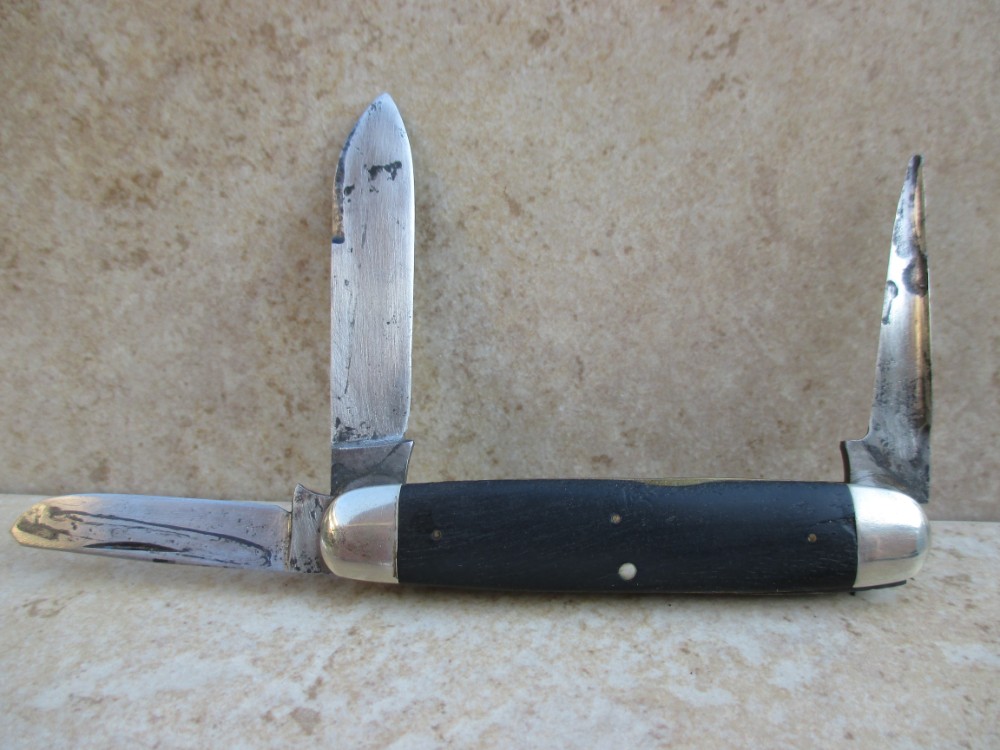I recently purchased a vintage knife (1900s - 1920s??) that, upon arrival, I had one primary concern... the handle pins were brass but the others were nickel silver. I'd never seen this before and immediately became concerned that this knife that was sold as original was a repair or fake. The odd thing was how well the knife was put together. Nice blade centering, good walk and talk, flush in all positions, no pin or handle cracks. All tang stamps seemed original and valid for the timeframe. I thought, perhaps, that this was a warranty repair; one done by the manufacturer? Because I'm not sure the average person could do a repair so well. And, if anyone was that talented, trying to sell off fakes or repaired knives as originals for a profit, wouldn't they put in the tiny extra bit of effort to match the pin stock??
Anyway, I started googling around and found in just a few hours a surprising number of knives with mixed pin stock. I started to question my understanding of typical knife construction as it started to seem like maybe this was common practice. I'll include pictures below.
So, my question to the knife experts out there... is mixed pin stock a method used on very old vintage knives originally? Are these knives likely repaired by the manufacturer? Repaired by some crafty individual? Are these fakes? I'd love to hear your input! Thanks again!!






Anyway, I started googling around and found in just a few hours a surprising number of knives with mixed pin stock. I started to question my understanding of typical knife construction as it started to seem like maybe this was common practice. I'll include pictures below.
So, my question to the knife experts out there... is mixed pin stock a method used on very old vintage knives originally? Are these knives likely repaired by the manufacturer? Repaired by some crafty individual? Are these fakes? I'd love to hear your input! Thanks again!!






